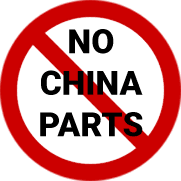What Are the Main Controls of a Helicopter?
A helicopter is a common form of rotary-wing aircraft, capable of generating the lift and thrust needed for flight with the use of horizontally-spinning rotors. With such vehicles, pilots may achieve vertical takeoffs and landings, hover in the air, and fly forward, backward, and laterally as desired. With these capabilities, the helicopter may be operated in countless areas and dense cities where a conventional fixed-wing aircraft would be unsuitable. In order to achieve the various flight capabilities of a standard helicopter, pilots rely on a set of controls that enable management of flight systems, surfaces, and more. In this blog, we will discuss the four main controls of a helicopter, those of which are the collective pitch control, throttle control, antitorque control, and cyclic pitch control.
When adjusting the pitch angle of a rotor blade, the angle of incidence is also adjusted. This can cause a change in drag, meaning that the main rotor may revolve faster or slower depending on the adjustment. Typically, the more the pitch angle increases, the more drag will increase. The rise in drag will also cause a decrease of rotor rpm as well. As it is desirable to have a constant rpm for the rotor throughout standard operations, the adjustments made to the pitch angle of rotor blades will typically require proportional changes in power for compensation. In order to do this, pilots use the throttle controller.
The throttle control is also situated within the helicopter cockpit for easy management by the pilot, and it allows for them to govern the engine rpm. When adjusting the pitch angle of the main rotor blades, many helicopters will feature a correlator or governor system that ensures that a desired rpm is regulated. When such components are not present, the pilot must manually adjust the throttle control as needed. Throttle controls come in the form of a twist-grip component, and counter-clockwise movements will typically increase engine rpm while clockwise turns will decrease rpm.
As helicopters will regularly feature a tail rotor to compensate for the torque generated by the main rotor, pilots take advantage of antitorque pedals which provide control of pitch. The antitorque pedals are situated at the feet of the pilot within the cockpit, and the depression of each will cause an adjustment to the pitch angle of the tail rotor blades. While in forward flight, adjusting the pedals will cause a change in thrust, resulting in a longitudinal trim. Meanwhile, the operation of pedals in a hover will allow a pilot to turn the helicopter on a 360 degree scale. To enact changes based on pedal depression, pedals are attached to a pitch change mechanism on the tail rotor gearbox.
The cyclic pitch control, or cyclic, is the final primary helicopter flight control, coming in the form of a piece that extends upwards from the cockpit floor to reach between the pilot’s legs or between two pilot seats. With the cyclic pitch control, pilots are provided with the means to achieve movement that is forward, rearward, left, or right. When the cyclic control is adjusted, the blades of the helicopter will be tilted in the direction of the desired horizontal direction, permitting the pilot to govern the path of travel. The cyclic control is matched with the rotor disk through mechanical linkages, allowing for the tilt to be conducted in the same direction that the control is moved.
If you find yourself in need of various helicopter components or controls that relate to the engine, landing gear, main rotor, tail rotor, and more, ASAP Parts 360 is your sourcing solution. ASAP Parts 360 is an online distributor of aircraft parts, offering competitive pricing and rapid lead times on a plethora of new, used, and obsolete components that have been sourced from leading global manufacturers. Take the time to explore our expansive catalogs, and our team members are always available to assist you through the purchasing process as needed with person-to-person communication every step of the way. Get started today and see how ASAP Parts 360 can fulfill all your operational needs with ease.


